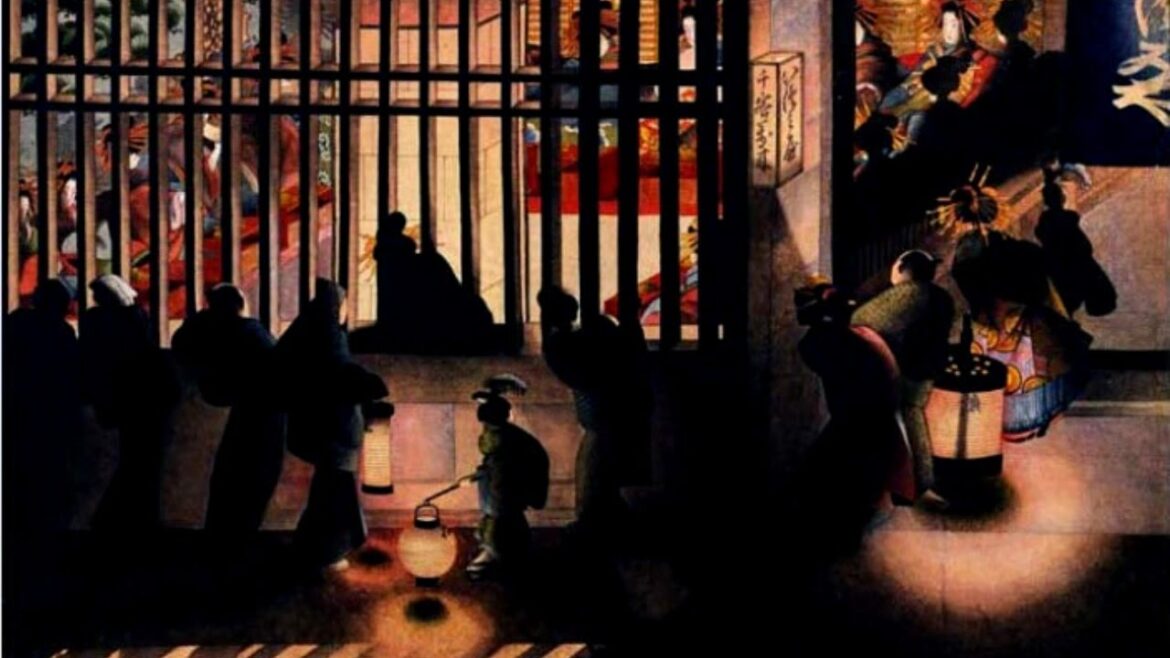#Japan
#Tokyo
#Japanese
Healing Japan Travel
The history of Yoshiwara Shrine can be said to be the history of the Yoshiwara Amusement District.
A remote place becomes a major entertainment district.
In the spring, cherry blossom trees were brought into the streets, delighting people’s eyes and becoming a tourist attraction in Edo.
It is said that 70% of the people who came to Yoshiwara were just passersby (hiyakashi).
People come to see beautiful women and beautiful places.
It is said that prostitutes were devoutly devoted to Inari-sama.
They must have made a variety of wishes.
Please feel the Yoshiwara Shrine while thinking about them.
Chronological table of the history of Yoshiwara brothels and Yoshiwara Shrine
In the 4th year of Wado (711), a white fox and a black fox descended from the sky in Chiba Kurosuke’s dream, and the shrine was recommended to the former Yoshiwara area.
1617 (Genna 3) With the permission of the Shogunate, prostitutes from all over Edo were gathered. The Moto-Yoshihara Era begins.
(The area around present-day Nihonbashi Ningyocho)
Suehiro Shrine is the general guardian of Moto-Yoshiwara
https://youtu.be/e6WplfNmmVw
Meireki 3 (1655) Move to Shin-Yoshihara (Senzoku Village) Beginning of the New Yoshiwara Era
The Gentoku Inari Shrine, located at the entrance to the district, had been enshrined in Senzoku Village before Shin-Yoshihara moved to the new location.
The Gentoku Inari Shrine, located at the entrance of the brothel, was the landowner’s deity enshrined in Senzoku Village before New Yoshiwara moved in.
Edo period (1603-1868) Kurosuke Inari Shrine in the Yoshiwara brothel appears in books.
1881 (Meiji 14) Four Inari and Gentoku Inari, located at the four corners of the Yoshiwara brothel, were enshrined together to form Yoshiwara Shrine.
1923 The shrine was destroyed by fire in the Great Kanto Earthquake, and a temporary shrine was built near Suidoshiri.
The prostitutes who were sacrificed at this time were enshrined at the site of Shin-Yoshihara Hanazono Pond (Benten Pond)
1934 New shrine was built at the present location, and Yoshiwara Benzaiten was enshrined at the same time.
In 1945, the shrine was destroyed by fire in an air raid on Tokyo by the U.S. Army.
1968 New shrine pavilion was built.
1977 Asakusa Seven Gods of Good Fortune were restored.
(From the Asakusa Shrine website and the Tokyo Metropolitan Shinto Shrine Directory by the Tokyo Metropolitan Shinto Shrine Office)
Illustrated book: All about the Yoshiwara Amusement quarters, ed. cube
https://amzn.to/3QbMQNW
Yuko Tanaka, “The brothel and the Japanese people
https://amzn.to/3SkLeDm
Edo’s Colorful Town: A History of Yoshiwara and Yoshiwara Yoshiwara and the Lives of Yoshiwara and prostitutes from the perspective of Edo culture Yuichiro Ando
https://amzn.to/3zRFFVK
Ao no Tatsuki Adachi Satoshi *Manga (set in Kurosuke Inari)
https://amzn.to/3zTonYm
Oni-no-Ba-Yuukaku-hen” Oni-no-Ba-Yuukaku-hen 8 Goutouge Koyoharu
https://amzn.to/3BBWMw5
Neighboring Shrines
1 min. walk from Yoshiwara Shrine: Shin-Yoshihara Hanazonoike Ruins, a sanctuary dedicated to prostitutes who died in the Great Kanto Earthquake, which should be visited together with Yoshiwara Shrine.
3 min. walk from Yoshiwara Shrine: Ootori Shrine (where prostitutes were allowed to go out only during the rooster market festival)
Tobifudo Shrine, a 4-minute walk from Yoshiwara Shrine (Fudo-sama, a guardian deity that flies back to make wishes come true)
Asahiyama Benten-in Temple, a 9-minute walk from Yoshiwara Shrine (Benten-sama in the park)
10-minute walk from Yoshiwara Shrine [The setting of the novel “Takekurabe”] Senzoku Inari Shrine
12-minute walk from Yoshiwara Shrine [Bad thunder was sealed in a well] Mishima Shrine (Shimotani)
13-minute walk from Yoshihara Shrine [Nitta Yoshisada, who destroyed the Kamakura Shogunate, prayed for victory] Tamahime Inari Shrine
14-minute walk from Yoshiwara Shrine【The center of sightseeing in Asakusa】Sensoji Temple
14-minute walk from Yoshiwara Shrine 【Dedicated to a superstar of the Heian period】Onoterasaki Shrine
17-minute walk from Yoshiwara Shrine [Bakumatsu period, Okita Soji and beckoning cat] Imado Shrine
My name is Mayu Noda.
I will introduce the charm of shrines around Tokyo, which I love.
Sometimes temples too.
♥TikTok ♥instagram ♥twitter ♥blog
pont.co/u/tokyo-zinzya
Please subscribe to our channel.
This site is a participant in the Amazon Associates Program, an affiliate program designed to provide a means for web sites to earn referral fees by promoting and linking to Amazon.co.jp.

